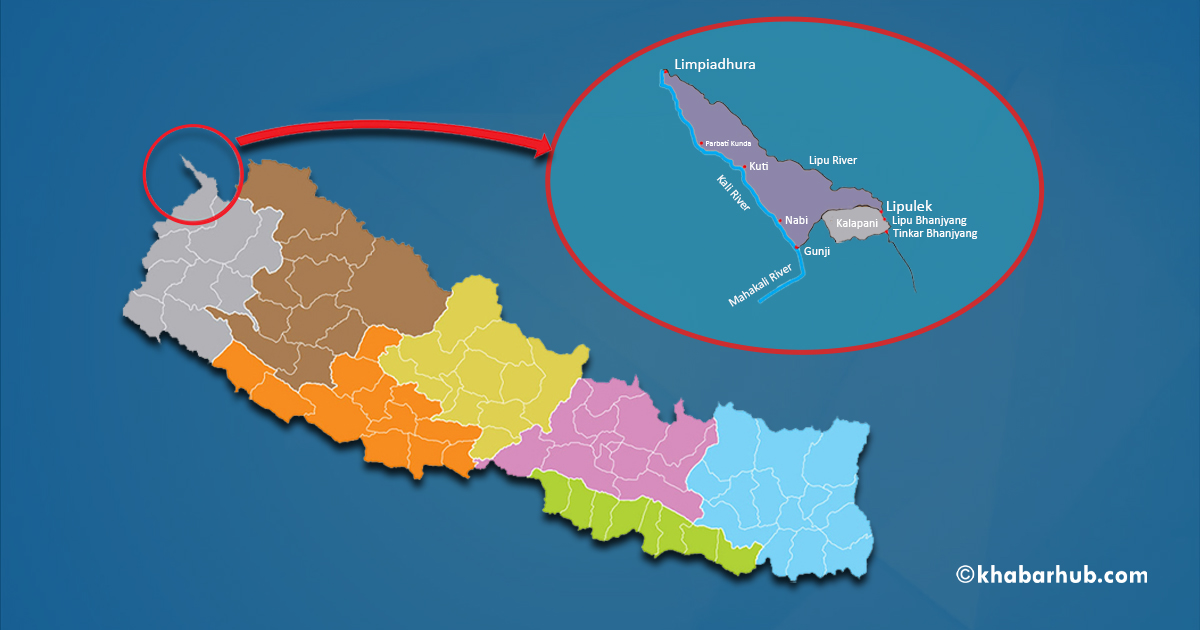0%

Nepal-India relations are facing tremors after Nepal responded to India’s inclusion of the 335-square kilometers into its political map in November 2019, and with the inauguration of a constructed road on May 2020 by releasing a new political map that encompasses the triangle land into Nepal’s territory.
This stand from Nepal doesn’t re-own the area immediately, but cements our demand of respect for our sovereignty from the southern neighbor, very strongly.
The historical evidences are all in our favor, in our claim. The Ministry of Land Management released 8 evidences that include the ‘Sugauli Treaty’, taxation paid by people in that region to the Nepal Government in 1938 AD, enlistment of the names of locals in the voters’ list of the first general elections in 1958 AD, and the census conducted in that area showed 613 households and 1,800 people for our claims of that region.
The Indian side knows that Nepal possesses that evidence, and has been reluctant to discuss this on the table for a long time.
The statement created a massive debate in Nepal and there was no way the Royalists, who idolize King Mahendra Shah as the epitome of nationalism, as well as religiously, could take the argument.
If the now disputed zone was in Nepal till 2018 when the census was conducted, how did Nepal lose 335 square kilometers of land?
In an interview, former Minister in the Panchayat era, Bishwa Bandhu Thapa, had claimed that the land was compromised by the then King, Mahendra Shah, to garner important support from Nehru in India for his dictatorial regime.
The statement created a massive debate in Nepal and there was no way the Royalists, who idolize King Mahendra Shah as the epitome of nationalism, as well as religiously, could take the argument.
Later the Indian media and experts stated that they were gifted that part of the land to occupy by then King Mahendra himself.
Their claim was also backed by the fact that India used that land during the Indo-China War in 1963, to which Mahendra Shah did not oppose.
The reputation and credibility of mainstream Indian media are not good, not just in Nepal but internationally and in India itself as well.
Now that the current Government of Nepal has published its map and stood strongly for its sovereignty, the general propaganda spread by the Royalists of Democracy being anti-national has been exposed.
Also, while Thapa’s claim does not have hard evidence, there is no denying that the land extending till Limpiyadhura got disappeared from Nepal’s map in those 30 years of direct monarchy.
The political map released in 1975 AD clearly shows that the then royal establishment officially omitted Kalapani, Lipulekh and Limpiyadhura from Nepal’s territory.
This is when it seems Nepal had compromised the land in a legitimate form. After the establishment of democracy in 1990, people’s representatives, media, experts, and the public got access to information about Nepal’s real territory.
That is when Nepal started claiming the land politically and asking for bilateral talks with the Indian establishment. In 2000, former Prime Minister, Girija Prasad Koirala, followed by almost all subsequent Prime Ministers, never let issues of the border dispute and a need of dialogue settle down.
The Indian side has always seemed to equivocate on the demanded dialogues on the subject matter by the Nepali party.
There were also public movements organized to pressurize the government to ensure our geographic integrity. Buddhi Bahadur Shrestha, after retiring from the Survey Department in 1993, visited the USA, United Kingdom, and China to collect evidences of Nepal’s true territorial existence.
The idea of a new map, that was released much later in 2020, was initially ideated by him and was initially laughed at.
Similarly, there were other movements that kept the leaders apprised of our demands of having the land, which as evidenced above, is historically ours.
Now that the current Government of Nepal has published its map and stood strongly for its sovereignty, the general propaganda spread by the Royalists of Democracy being anti-national has been exposed.
Nepal hasn’t been that puppet that the royalists blame it has become, and neither has its existing or historic multiparty democracy.
Especially, when it is now proven that it was during their glorified Panchayat that Nepal administratively lost control and in 1975, under then King Birendra, Nepal omitted 335 square kilometers in its political map.
Multi-party democracy was never liked by the royals and their fanatics right from the fight against Ranas. The major fuel for Mahendra to overthrow one of the most effective governments in the history of Nepal, and its democracy along with it, was his narrative of ‘the democrats being anti-national’.
The same narrative gets injected into the Nepali political circuit time and again. Furthermore, the theory of fear invented by Nepal’s right-wingers have always wrongly proclaimed that multi-party democracy cannot maintain the geographical and emotional integrity of our nation.
However, the proven fact is that Nepal has been firm in holding its position regarding border issues after 1990. We formulated a constitution without indulging in the interests of any foreign element. This made us face an inhuman blockade too from India.
Nepal hasn’t been that puppet that the royalists blame it has become, and neither has its existing or historic multiparty democracy.
All the development indexes show that it has been better in the post-1990 era, and with Nepal’s explicit stand for its lost territory, I believe it is better for Royalists to leave their conspiracy theories and save the concept of monarchy as bedtime stories for their children.
(The writer is a political activist, and views expressed in this article are the author’s own and do not necessarily reflect Khabarhub’s editorial stance)